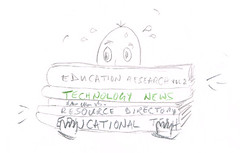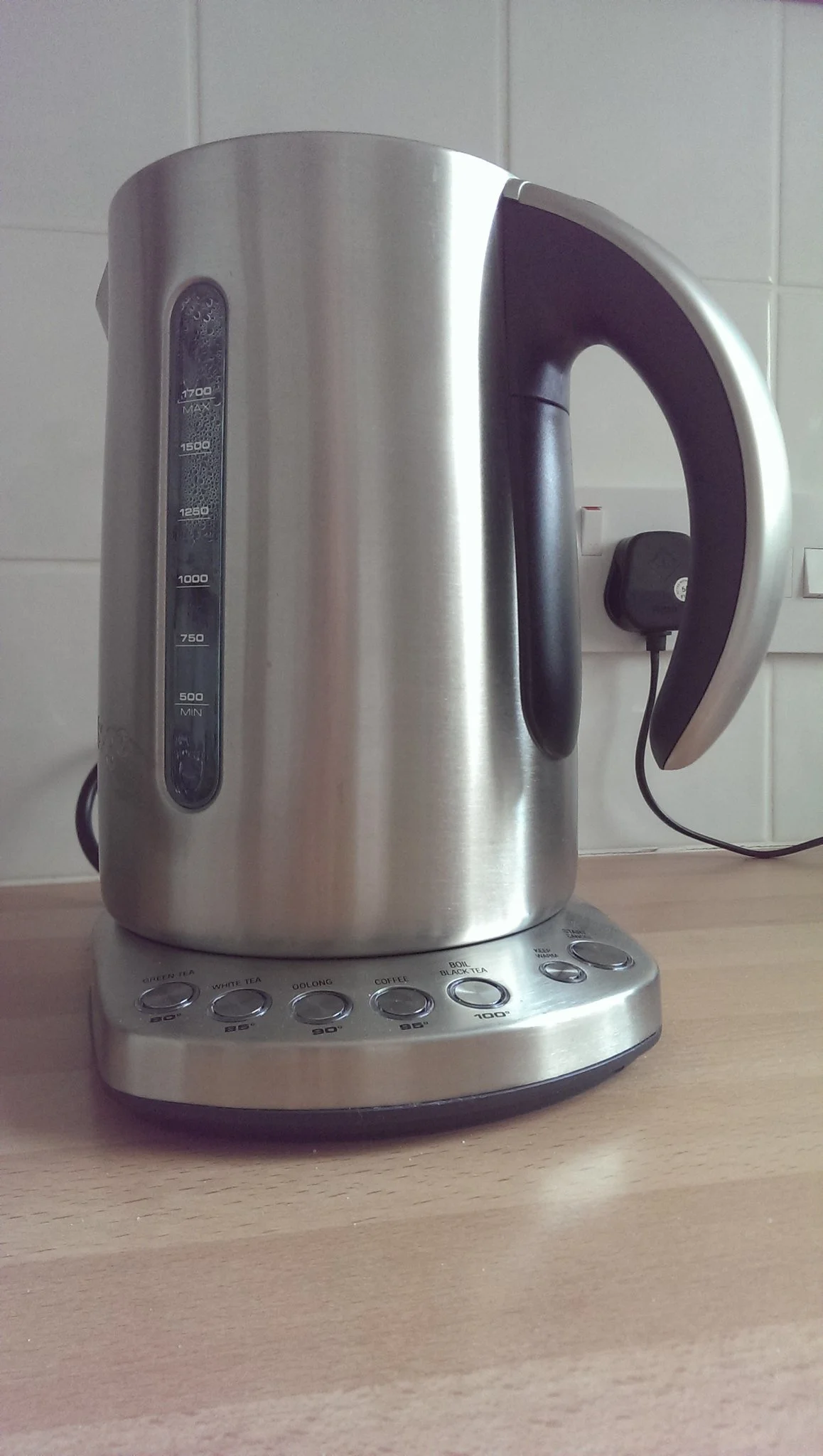Electric kettle, by Terry Freedman
Like many English people, the most important thing to me is having a decent cup of tea. So I was delighted when we bought a variable temperature kettle. This doesn’t just heat up the water to boiling point. It lets you select the right temperature for the kind of drink you have. I tell you, my early morning cuppa never tasted so good. You select the temperature you want the water to be, and you can even opt to keep the water warm – a handy device if, like me, you boil the kettle and then go off to feed the various parasites that live with you. (Presumably, I should not have used the expression “boil the kettle”, but saying “95 degree Celsius the kettle” does not exactly flow off the tongue.)
But how does it work? It struck me that this would be a nice exercise to set students. What would be the underlying algorithm by which the kettle works out what the temperature is, and then carries on heating the water or stops? How does keeping the water warm come into it? And how would the algorithm or flowchart differ for an ordinary kettle?
I don’t think it matters much whether what the students work out is actually how it works in practice, but there is some information available, such as this eHow article: How does an electric kettle work?
Update
This is now the second super-duper kettle we’ve bought because the original one went wrong — probably from overuse. For some reason, we also bought a gas kettle, which is quieter, but takes ages, and then emits a high-pitched whistle when it’s boiled — and carries on until you either turn the gas off or sling the kettle out of the window. The electric one simply switches itself off.
That is if it has allowed us to switch it on in the first place. It’s a sensitive little thing, so if there is the smallest drop of water on its bottom it metaphorically folds its arms and refuses to do anything until it’s been completely dried.
Sensible, I suppose, but incredibly annoying if you’re dying for a cup of tea.

Your newsletter editor is hard at work doing research for Digital Education, the free newsletter for education professionals. Have you subscribed yet?
Read more about it, and subscribe, on the Newsletter page of the ICT in Education website.
We use a double opt-in system, and you won’t get spammed.

